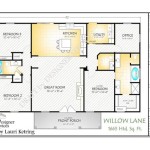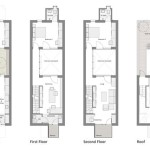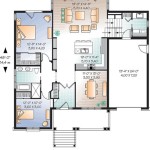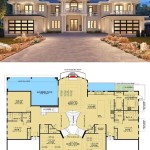Timber frame house plans serve as blueprints for constructing houses with robust wooden frameworks. These frameworks form the structural backbone of the building, providing exceptional strength and durability. An apt illustration of a timber frame house plan is a majestic lodge nestled amidst towering pines, its sturdy beams interlocked and exposed, lending an air of rustic charm and unwavering resilience.
Beyond their structural significance, timber frame house plans offer a plethora of aesthetic possibilities. The exposed wooden frameworks can be customized with intricate joinery and artful carvings, imparting a unique character to each home. This blend of structural integrity and visual appeal has made timber frame houses a popular choice for homeowners seeking a harmonious fusion of strength, beauty, and timelessness.
Moving forward, this article will delve deeper into the world of timber frame house plans, exploring their advantages, design considerations, and the intricacies involved in their construction. We will also showcase inspiring examples of timber frame homes that embody the perfect balance of functionality and aesthetics.
When embarking on the journey of building a timber frame house, it is essential to consider the following key points:
- Structural Strength
- Durability and Longevity
- Energy Efficiency
- Customizable Designs
- Exposed Framework Aesthetics
- Sustainable Building Practices
- Fire Resistance
- Pest Resistance
- Craftsmanship and Precision
- Local Building Codes
By carefully considering these aspects, you can ensure that your timber frame house plan translates into a sturdy, beautiful, and environmentally conscious home that will stand the test of time.
Structural Strength
Timber frame house plans are renowned for their exceptional structural strength, a defining characteristic that sets them apart from many other building methods. This strength stems from the use of heavy timbers, typically ranging from 6×6 inches to 12×12 inches or even larger, which are joined together using traditional joinery techniques. These joints, such as mortise and tenon or dovetail joints, are designed to interlock and reinforce each other, creating a highly stable and robust framework.
The strength of timber frame construction is further enhanced by the inherent properties of wood itself. Wood is a naturally strong and durable material, with a high strength-to-weight ratio. Additionally, the interlocking nature of the timber frame distributes weight evenly throughout the structure, eliminating weak points and ensuring the integrity of the building.
The structural strength of timber frame houses is not only evident in their ability to withstand everyday use but also in their resilience against extreme weather events. The robust framework can effectively resist high winds, heavy snow loads, and even earthquakes, making timber frame houses a safe and secure choice for homeowners in areas prone to natural disasters.
Furthermore, timber frame construction allows for large open spaces and soaring ceilings without the need for additional support structures. This flexibility in design enables architects and builders to create expansive and dramatic living areas, maximizing natural light and creating a sense of spaciousness.
Durability and Longevity
Timber frame house plans are renowned for their exceptional durability and longevity, with many timber frame structures standing strong for centuries. This remarkable longevity can be attributed to several key factors:
Resistant to Rot and Decay: Timber frames are naturally resistant to rot and decay due to their high density and the presence of natural preservatives in the wood. Additionally, the exposed nature of the framework allows for proper ventilation, preventing moisture accumulation and further reducing the risk of rot.
Minimal Maintenance: Unlike other building materials, timber frames require minimal maintenance. Regular inspections and occasional cleaning are typically sufficient to maintain their structural integrity and aesthetic appeal.
Pest Resistance: The durability of timber frame houses is further enhanced by their resistance to pests. The dense nature of the wood and the lack of enclosed spaces make it difficult for pests to infest and damage the structure.
Fire Resistance: While wood is combustible, the mass and density of timber frames provide inherent fire resistance. In the event of a fire, the thick timbers burn slowly and predictably, allowing occupants ample time to evacuate and firefighters to contain the blaze.
Energy Efficiency
Timber frame house plans are inherently energy-efficient, offering several advantages that contribute to lower energy consumption and reduced carbon footprint:
- Thermal Mass: Timber has a high thermal mass, meaning it can absorb and store heat. This property helps regulate indoor temperatures, reducing the need for heating and cooling systems.
- Insulation: The spaces between the timber frame members can be filled with insulation materials, such as cellulose, fiberglass, or spray foam. This insulation helps trap pockets of air, creating a thermal barrier that minimizes heat loss.
- Airtightness: Timber frame construction allows for precise joinery and sealing, resulting in a more airtight building envelope. This reduces air leakage and infiltration, preventing heat loss and improving energy efficiency.
- Natural Ventilation: The exposed nature of timber frames facilitates natural ventilation. Operable windows and doors can be strategically placed to capture breezes and promote air circulation, reducing the reliance on mechanical ventilation systems.
The combination of these factors contributes to a more energy-efficient home, leading to lower energy bills and a reduced environmental impact.
Customizable Designs
Timber frame house plans offer unparalleled flexibility in design, allowing homeowners to tailor their homes to their specific needs and preferences. The customizable nature of timber frames stems from several key factors:
Flexibility in Size and Shape: Timber frames can be adapted to accommodate a wide range of sizes and shapes, from cozy cabins to sprawling mansions. The modular nature of the framework allows for easy expansion or reconfiguration, making it suitable for both small and large building projects.
Open Floor Plans: Timber frames excel at creating open and airy floor plans, with soaring ceilings and expansive living spaces. The absence of load-bearing interior walls provides greater flexibility in arranging rooms and creating custom layouts that suit individual lifestyles.
Unique Architectural Features: Timber frame construction lends itself well to incorporating unique architectural features, such as curved walls, vaulted ceilings, and intricate rooflines. These features add character and visual interest to the home, creating a truly distinctive and personalized living space.
Endless Exterior Options: The exterior of a timber frame house can be customized to suit any architectural style, from traditional to contemporary. Cladding options include wood siding, stone, brick, or stucco, allowing homeowners to create a facade that complements their surroundings and reflects their personal taste.
The customizable nature of timber frame house plans empowers homeowners to create dream homes that are not only structurally sound and energy-efficient but also tailored to their unique needs and aspirations.
Exposed Framework Aesthetics
Timber frame house plans embrace the beauty of exposed wooden frameworks, transforming them into captivating aesthetic elements. These frameworks, with their intricate joinery and natural textures, add a touch of rustic charm and timeless elegance to any home.
The exposed framework can be showcased in various ways, depending on the desired style. In some homes, the timbers are left in their natural state, showcasing the unique grain patterns and knots of the wood. This approach creates a warm and inviting atmosphere, reminiscent of traditional timber-framed structures.
Alternatively, the timbers can be stained or painted to complement the interior design scheme. This allows homeowners to add a personal touch to their homes while still maintaining the rustic charm of the exposed framework. Darker stains can create a more dramatic effect, while lighter stains can brighten up the space and make it feel more airy.
The exposed framework can also be used to create architectural features that add visual interest to the home. For example, timbers can be curved to form arches or used to create vaulted ceilings, adding a touch of grandeur to the space. Intricate carvings and decorative joinery can further enhance the aesthetic appeal of the exposed framework.
In addition to their aesthetic value, the exposed framework also serves a practical purpose. It can be used to support built-in furniture or shelving, creating a cohesive and functional living space. By incorporating the framework into the design, homeowners can maximize space and create a truly unique and personalized home.
Sustainable Building Practices
Timber frame house plans align seamlessly with sustainable building practices, offering a multitude of eco-friendly advantages:
- Renewable and Sustainable Resource: Wood is a renewable and sustainable building material, making timber frame houses an environmentally responsible choice. Sustainable forestry practices ensure that trees are harvested responsibly and replanted, maintaining the health and longevity of our forests.
- Energy Efficiency: As discussed earlier, timber frame houses are inherently energy-efficient due to their thermal mass, insulation, and airtightness. This reduced energy consumption not only lowers utility bills but also minimizes the carbon footprint of the home.
- Reduced Waste: Timber frame construction generates minimal waste compared to other building methods. The precision cutting and joinery techniques result in less scrap wood, and the use of natural materials eliminates the need for synthetic materials that can end up in landfills.
- Indoor Air Quality: Wood is a naturally hypoallergenic and breathable material, contributing to improved indoor air quality. Timber frame houses often incorporate natural ventilation systems that promote air circulation and reduce the risk of moisture buildup and mold growth, creating a healthier living environment.
By embracing sustainable building practices, timber frame house plans not only create beautiful and durable homes but also contribute to a more sustainable and eco-conscious built environment.
Fire Resistance
Timber frame house plans incorporate inherent fire-resistant properties that contribute to the safety and resilience of these structures:
- Slow Combustion: Timber, despite being a combustible material, burns slowly and predictably. The dense and thick nature of the timbers provides a natural barrier against rapid flame spread, allowing occupants ample time to evacuate and firefighters to contain the blaze.
- Charring Layer: As timber burns, it forms a protective char layer on its surface. This char layer insulates the underlying wood, slowing down the combustion process and preventing the fire from reaching the interior of the structure.
- Limited Oxygen Supply: The airtight nature of timber frame construction restricts the flow of oxygen to the fire, further limiting its spread. The absence of enclosed spaces within the framework also reduces the risk of hidden ember pockets that could reignite the fire.
- Fire-Retardant Treatments: Additional fire-retardant treatments can be applied to the timbers to enhance their resistance to flames and embers. These treatments penetrate the wood and create a protective barrier that delays ignition and slows down the spread of fire.
The combination of these fire-resistant properties makes timber frame houses a safer choice compared to many other building methods. In the event of a fire, timber frames provide occupants with valuable time to escape and minimize structural damage, ensuring the safety and integrity of the home.
Pest Resistance
Timber frame house plans offer inherent pest resistance due to several key factors:
- Dense and Durable Wood: The heavy timbers used in timber frame construction are naturally resistant to pests due to their density and durability. The tightly packed wood fibers make it difficult for pests to penetrate and infest the structure.
- Natural Preservatives: Many types of wood used in timber framing, such as oak and cedar, contain natural preservatives that repel insects and other pests. These natural chemicals make the wood less palatable and toxic to pests, deterring them from infesting the structure.
- Lack of Enclosed Spaces: The open and airy nature of timber frame construction minimizes the presence of enclosed spaces where pests can nest and breed. The absence of hidden nooks and crannies reduces the likelihood of pest infestations.
- Proper Ventilation: Timber frame houses are designed to promote natural ventilation through operable windows and doors. This ventilation helps to keep the structure dry and free from moisture buildup, which can attract certain types of pests.
The combination of these factors contributes to the pest resistance of timber frame houses, ensuring a healthier and more durable living environment.
Craftsmanship and Precision
Timber frame house plans demand exceptional craftsmanship and precision at every stage of the building process. This meticulous attention to detail ensures the structural integrity, durability, and aesthetic appeal of the finished home.
- Skilled Craftsmanship: Timber framing requires highly skilled craftsmen with a deep understanding of joinery techniques and the behavior of wood. These artisans carefully select and prepare the timbers, ensuring proper fit and alignment. Their expertise is evident in the precise cutting, shaping, and joining of each member, resulting in a sturdy and visually stunning framework.
- Precision Engineering: Timber frame construction relies on precise engineering calculations to determine the appropriate dimensions and connections for each timber. Engineers work closely with architects and builders to ensure that the framework meets structural requirements and withstands the forces of nature. This precision engineering ensures the stability and longevity of the home.
- Time-Honored Techniques: Timber framing draws upon centuries-old techniques that have been refined over generations. These time-honored methods, such as mortise and tenon joints and dovetail joints, provide exceptional strength and durability. Craftsmen employ these techniques with precision and care, creating a framework that is both structurally sound and aesthetically pleasing.
- Quality Control: Throughout the construction process, rigorous quality control measures are employed to ensure that the highest standards are met. Each timber is carefully inspected for defects, and all joints are meticulously checked for proper fit and alignment. This unwavering commitment to quality ensures that the finished home is not only beautiful but also built to last.
The combination of skilled craftsmanship, precision engineering, time-honored techniques, and rigorous quality control results in timber frame houses that are not just homes but works of art. These structures stand as a testament to the dedication and expertise of the craftsmen who create them.
Local Building Codes
Timber frame house plans must adhere to local building codes to ensure compliance with safety regulations and construction standards. These codes vary across municipalities and regions, and it is crucial for homeowners and builders to familiarize themselves with the specific requirements applicable to their area.
Local building codes typically address aspects such as structural integrity, fire safety, energy efficiency, and accessibility. They establish minimum requirements for the size and spacing of timbers, the design of joints, and the use of fire-resistant materials. Compliance with these codes ensures that timber frame houses are safe and habitable, meeting the necessary standards for occupancy.
In addition to general building codes, some localities may have specific regulations related to timber frame construction. These regulations may address issues such as the use of specific wood species, the treatment of timbers for durability, and the detailing of critical connections. It is important for builders to consult with local building officials to determine the exact requirements that apply to their project.
Understanding and adhering to local building codes is essential for ensuring the safety and legality of timber frame house plans. By working closely with local authorities, homeowners and builders can navigate the regulatory landscape and create beautiful and compliant timber frame homes.










Related Posts








